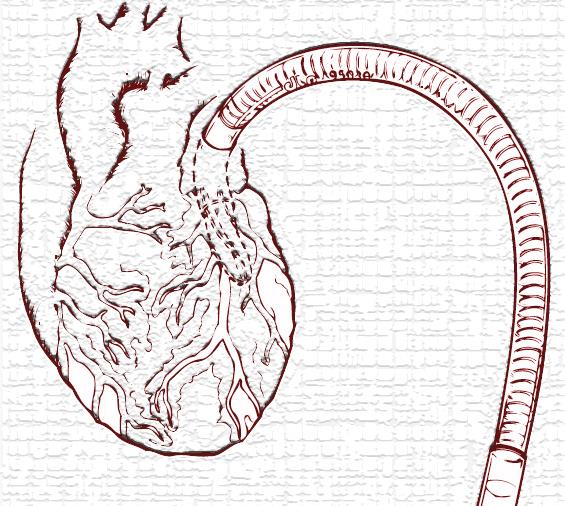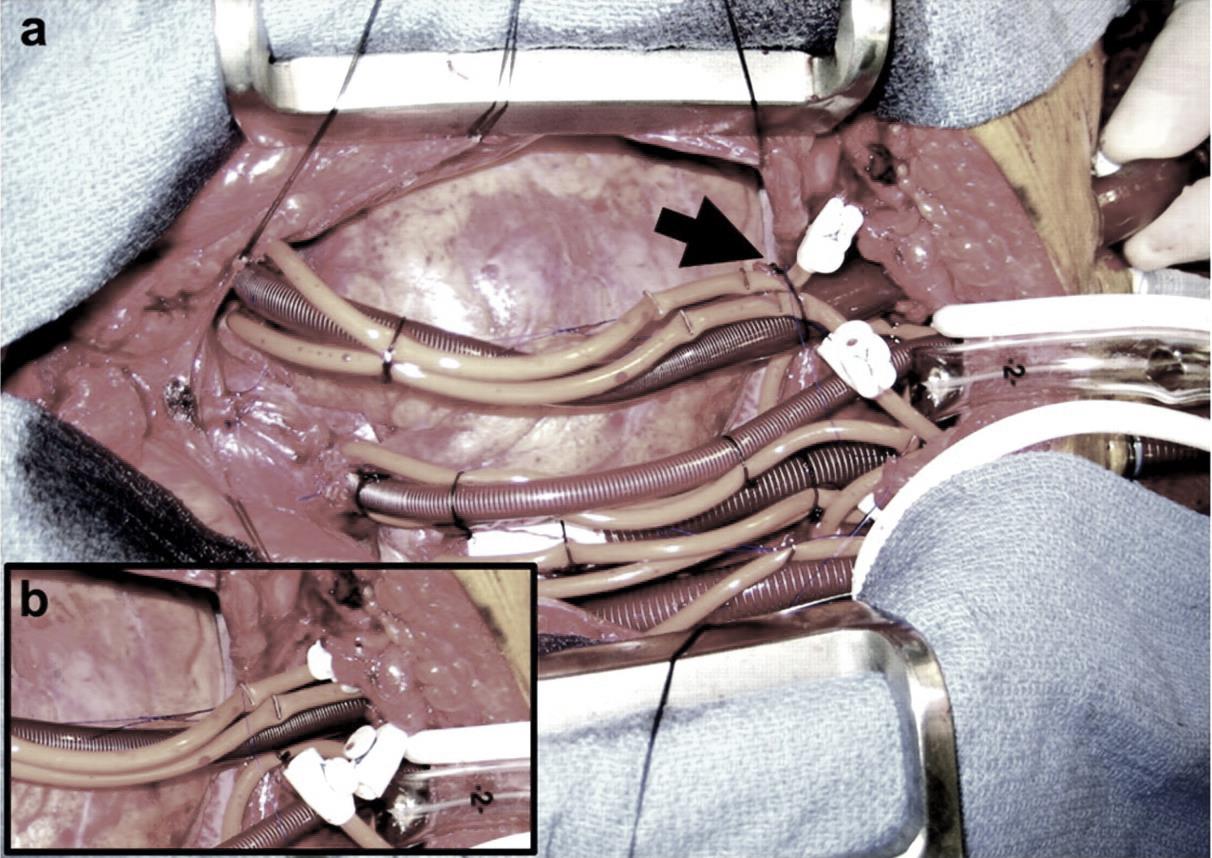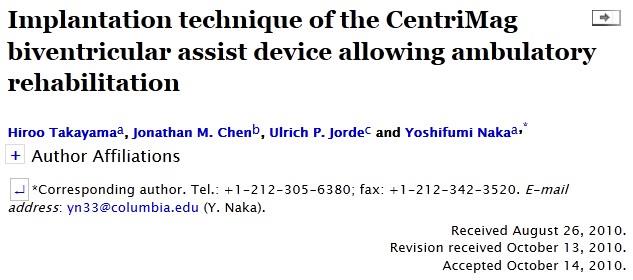The CentriMag VAD : Insertion & Cannulaes

The CentriMag Pump
Display Console and Drive Units
Operative Technique
RVAD
- The right ventricular assist device (RVAD) is usually established with the right atrium as the inflow and the main pulmonary artery as the outflow.
LVAD
- The outflow of the LVAD is the ascending aorta except in unusual cases where the descending aorta or a more peripheral branch may be considered.
- The inflow of the LVAD is chosen based on the patient’s condition.
When Myocardial Recovery is a possibility
The inflow cannula is inserted into the left ventricle when myocardial recovery is a possibility. This is done either through left ventricular apical cannulation or by advancing the left atrial cannula into the left ventricle through the mitral valve.
When Myocardial Recovery is NOT a posibility
Otherwise, the left atrium is cannulated. Although the apical cannulation provides most reliable decompression of the left ventricle, it requires mobilization of the left ventricle, which compromises the hemodynamics.
Cannula Selection
The most common choices of cannulas are as follows:
RVAD
20–24 Fr elongated on-piece arterial cannula (Medtronic, Inc, MN, USA) for the pulmonary artery,
31 Fr DLP right angle metal tip venous cannula (Medtronic, Inc, MN, USA) for the right atrium or right ventricle,
LVAD
7–8 mm Sarns soft flow aortic cannula (Terumo Corp., Tokyo, Japan),
31 Fr right-angle metal tip venous cannula for the left atrium,
36–40 Fr DLP malleable single stage venous cannula (Medtronic, Inc, MN, USA) for the left ventricle (either through the left atrium or the left ventricular apex). The procedure is performed without cardiopulmonary bypass support whenever feasible.
Technique
After a median sternotomy, double purse-string sutures with 2-0 or 3-0 polypropylene buttressed with bovine pericardial pledgets are placed at the cannulation sites and passed through DLP tourniquets (Medtronic, Inc, MN, USA).
The cannulae are introduced into the pericardial cavity through separate stab wounds at the upper abdomen.
Cannulation is performed and the cannulae are secured to the tourniquets with 0 silk ties. These tourniquets are folded and tied with another 0 silk tie on to the cannulae at their entry point to the posterior aspect of the rectus abdominis muscle fascia.
This looks like a ‘Fleur-de-Lis’ and works as an anchor, and further secures and immobilizes the cannulae. When there is enough length, the tourniquets are folded back again for better anchoring. Securing the folded tourniquets at an appropriate point onto the cannulae is the key of this technique.
This point is determined at the level of the posterior rectus fascia to leave appropriate length of the cannulae in the pericardial space. This immobilizes the cannulae and prevents migration during aggressive physical activity with rehabilitation.
Attention is paid to ensure the folded tourniquets are working as secured anchors by forcefully pulling back the cannulae. Each cannula is sutured onto the skin at three points, connected to the BiVAD circuit, and the BiVAD is actuated. Drains are placed and the sternotomy wound is closed in the usual fashion
Discussion
Although CentriMag VADs are designed and approved only for short-term support, our insertion technique allows longer-term use, when needed, without forced bed rest. Ambulatory rehabilitation has many advantages and prepares the patients for the next stage of the treatment, such as implantable long-term VADs or heart transplantation.
A highly redundant safety system is achieved by maximizing the immobilization of the cannulae through several stages;
1) securing the cannulae to the tourniquets,
2) folding the tourniquets at the fascia level as an anchor,
3) multiple secure sutures on the skin, and
4) abdominal binder. After the early postoperative period, adhesion is formed around the cannula inside of the pericardium, and this eventually further secures the cannulae.
Published by European Association for Cardio-Thoracic Surgery. All rights reserved.
Points to Consider:
LVAD Cannulation: Are 2 Inflows Better Than 1?
Source
Department of Cardiovascular Surgery, University Hospital CHUV, Lausanne, Switzerland.
Abstract
The efficiency of left ventricular assist devices (LVADs) depends on the capacity of the inflow cannula to drain blood into the pump. Left atrial (LA) and left ventricular (LV) sites were compared in an animal model mimicking different hemodynamic conditions.
Three calves (56.3+/-5.0 kg) were equipped with a Thoratec LVAD. A regular cardiopulmonary bypass (CPB) circuit was used as a right ventricular assist device (RVAD) (jugular vein/pulmonary artery), and preload conditions were adjusted by storage (or perfusion) of blood into (or from) the venous reservoir. LA and LV drainage, tested separately or simultaneously, was measured by its effect on the LVAD’s performance.
The LVAD was used alone on a beating heart or together with the RVAD (biVAD) on a beating and on a fibrillating heart. Increasing the central venous pressure (CVP) highlighted the differences between the LA and LV cannulation sites when the LVAD was tested either alone or together with the RVAD (biVAD) on a beating heart.
Drainage through the LA or the LV was similar when CVP was set at 8 mm Hg, and increasing CVP to 14 mm Hg allowed for better drainage through the LV cannula.
In contrast, after induction of fibrillation to mimic extreme heart failure, the drainage was better through the LA cannula. Using both LA and LV cannulae simultaneously did not improve the LVAD output in any of the conditions tested.
LV cannulation provides better blood drainage when used on a normal beating heart and, therefore, allows for increased LVAD performance.
However, in severe heart failure, blood drainage through the LV cannula decreases and the LA cannulation site is superior.
Source Article: Click image to view…
References
-
. Advanced heart failure treated with continuous-flow left ventricular assist device. N Engl J Med 2009;361:2241-2251.
- . Initial experience with CentriMag extracorporal membrane oxygenation for support of critically ill patients with refractory cardiogenic shock. J Heart Lung Transplant 2009;29:66-71.
- . Pediatric application of the Thoratec CentriMag BiVAD as a bridge to heart transplantation. J Thorac Cardiovasc Surg 2008;136:1386-1387.
- . Experience with the Levitronix CentriMag circulatory support system as a bridge to decision in patients with refractory acute cardiogenic shock and multisystem organ failure. J Thorac Cardiovasc Surg 2007;134:351-358.





